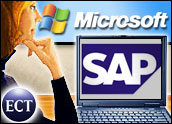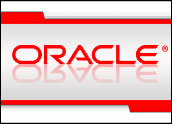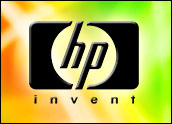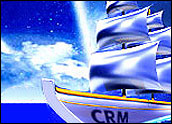
Microsoft and SAP announced today they are working to build a program — code named “Mendocino” — to link together Microsoft’s Word office suite with SAP’s enterprise software, a move that analysts say could have a profound effect on the entire market.
“The possibility of a close relationship between SAP and Microsoft carries all kinds of weighty implications for virtually every enterprise software vendor, customer and partner,” Evan Quinn, vice president of enterprise applications, IDC, told CRM Buyer. “While the interoperability partnership has yielded some initial shared technology, Mendocino portends a more real impact because it has to do with actual cross-leveraging of market-leading products.”
Co-Selling Agreement
The companies said in a press release that they will cross-sell the entire solution. That means SAP will offer Microsoft Office and Microsoft will sell mySAP Enterprise Resource Planning licenses. The software will be available to select customers in the fourth quarter, and widely available in 2006. The link is something users have been looking for, Erin Kinikin, vice president, enterprise applications, Forrester Research, told CRM Buyer.
“Companies are looking for Microsoft to be the primary interface, with enterprise applications taking orders from the business users,” she said. “There’s no reason users can’t enter expense information in Excel, and route it to the manager with InfoPath, rather than getting a whole new application with its own user interface that IT has to change every time the manager changes.”
New Model of Applications
Quinn said IDC believes that these integrated applications will become ubiquitous. The research firm calls the trend “enterprise workplace,” and defines it as the simplification of the workers’ IT interactions.
“Portals enables users to get at all their applications, but ‘enterprise workplace’ applications actually integrate various applications for information workers under a business process context,” he said. “Mendocino begins to break down the barriers of application silos, to the benefit of end user productivity, and therefore to the benefit of their enterprises.”
While Kinikin agrees on Mendocino’s value to enterprises, she offers one caveat to SAP: “The trick is, SAP has to cede control of the ‘last mile’ to Microsoft [and the business user] in the Mendocino model,” she said. “It’s a great co-selling relationship now, but Microsoft could certainly use this as a Trojan horse to get some of their own applications in along side SAP. If all the user sees is Excel, they may not value SAP at the high premiums SAP commands today.”










































